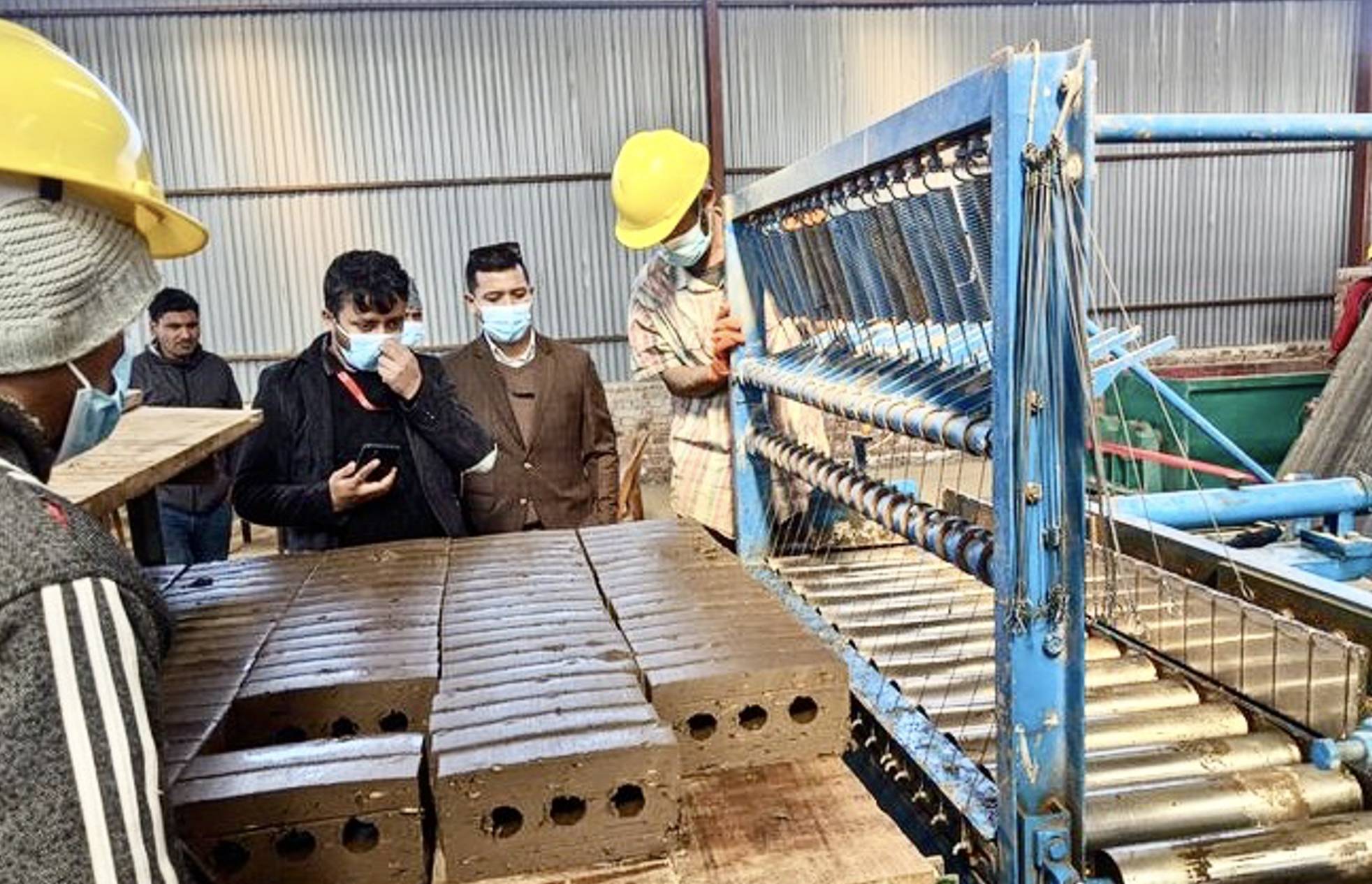
Nepal is one of the countries in South Asia where urbanization is rapidly increasing. Unplanned urban sprawl and haphazard building development have, however, increased energy usage, with heating and cooling absorbing 60 percent of the energy used in Kathmandu's modern structures. Census figures from 2021 have shown that urban regions housed 66.08 percent of the population. If the country doesn't take immediate action to alter the way buildings are built in its metropolitan areas, a tremendous amount of energy will be needed in the near future.
To promote an energy-efficient urban development that creates safe, green, healthy, and resilient places, BUILDING Energy Efficiency in Nepal (BEEN), a four-year project funded by the European Union under the SWITCH-Asia Programme, and led by the University of Innsbruck, Austria in collaboration with MinErgy Pvt Ltd, Nepal, Greentech Knowledge Solutions Pvt Ltd, India, and Asociación Espaola de Normalización (UNE), Spain, aims to transform the use of bricks in Nepal from traditional bricks to modern energy efficient hollow bricks. The use of hollow bricks will significantly help the country reach its ambitious goal of zero emissions by 2050, as outlined in its Nationally Determined Commitment (NDC).
Voices from the ground

Many people, including his relatives, were startled when Rajesh Maharjan, a resident of Lalitpur Metropolitan City (LMC), opted to use hollow clay bricks in his new home. Maharjan carried out his decisions with the support of his wife Kalpana Maharjan.
As someone who has worked in the development sector, Maharjan selected hollow clay bricks because they are a recent innovation that is less expensive, energy efficient, light in weight, and environmentally friendly.
The first building made of hollow bricks is Maharjan's three-story multipurpose structure, which is located in Gwarko, Ward No. 9 of the LMC. The newly constructed structure, which is currently in its finishing stages, serves as a model for learning about the cost, benefits, and long- and short-term advantages of using hollow bricks.
Hollow clay bricks have the reputation of being a cost-effective, environmentally friendly, and resource-efficient building material. But, no matter how many buildings are built, neither one nor ten will make the product economically viable or considerably aid in the reduction of emissions unless a sizable market is created for mass production.
Research and tests have previously established the resource-efficiency of hollow bricks. These are extensively used all over the world and use less clay and coal, reducing the production of hazardous pollutants like carbon dioxide. According to studies, a brick with a 15% hollowness can save up to 24% clay and up to 30% fuel. Tubular hollow cavities increase insulation, which help to lower energy costs for maintaining thermal comfort during building operations. If a room is constructed using hollow bricks rather than solid ones, it is predicted that up to 5% of the energy used for air conditioning will be saved, explained Suyesh Prajapati, Team Leader of the SWITCH-Asia BEEN project. He added, hollow brick manufacture and use can drastically save fuel costs for brick entrepreneurs, energy expenses for building occupants, and eventually provide economic benefits to the country. Brick kiln emissions are also reduced by the reduction in coal consumption.
In spite of having so many benefits, hollow bricks are yet to enter the Nepalese market due to a lack of marketing initiatives, proper knowledge of hollow bricks, and government policy.
Hollow clay bricks have been produced in Nepal since a long time, however, the number of bricks produced has been quite small. Chiribabu Maharjan, the Mayor of Lalitpur Metropolitan reported building his home in Sanepa, Lalitpur in 2014 using hollow bricks. Nonetheless, there is still a very minor gap between the supply and demand for hollow bricks—less than 100,000 each year.
 The first large-scale commercial manufacturing of hollow clay bricks has begun in Nepal after being jointly launchedon 20 January 2023 at the Hosanna Brick Factory in Harisiddhi by the mayor of Lalitpur Metropolitan City (LMC), Chiri Babu Maharjan, and the Ambassador of the European Union to Nepal, Nona Deprez. Elected representatives, government officials from the federal, provincial, and municipal levels, as well as brick producers, have official marked a new era in the history of Nepal's brick manufacturing, pushing for the switch from the production of emission heavy traditional clay bricks to environmentally friendly hollow bricks.
The first large-scale commercial manufacturing of hollow clay bricks has begun in Nepal after being jointly launchedon 20 January 2023 at the Hosanna Brick Factory in Harisiddhi by the mayor of Lalitpur Metropolitan City (LMC), Chiri Babu Maharjan, and the Ambassador of the European Union to Nepal, Nona Deprez. Elected representatives, government officials from the federal, provincial, and municipal levels, as well as brick producers, have official marked a new era in the history of Nepal's brick manufacturing, pushing for the switch from the production of emission heavy traditional clay bricks to environmentally friendly hollow bricks.
With 20 years of experience and a production capacity of over two million bricks annually, Hosanna Brick Factory is now offering various sizes of hollow bricks. The factory installs modern types of equipment with an investment of over Rs.20 million. The hollow bricks produced by the factory will be available in the market responding to consumers’demand.
"Our existing capacity is sufficient to meet themarket demand. To develop the market for our products, we do, however, need assistance from all levels of government. The federal government ought to change its housing regulations to allow the use of hollow bricks in the construction of public structures,” said Krishna Awale, owner of Hosanna Brick Factory.
In this context, the EU SWITCH-Asia Building Energy Efficiency Nepal (BEEN) Project has launched promotional activities in close collaboration with local authorities, the Ministry of Federal Affairs and General Administration, the Department of Urban Development and Building Construction (DoUDBC), the Alternative Energy Promotion Center, NGOs, the Brick Factory and the Brick Producer Association. Strong multi-stakeholder engagement and wide campaign coverage of the 60 municipalities across the four bio-climatic zones in Bagmati, Lumbini, and Gandaki provinces, have created momentum for promoting energy-efficient buildings in Nepal and raising consumer awareness on hollow bricks.
To better inform consumers that purchasing this brick is in their long-term best interests as citizens since it affects the quality of the air we breathe and our health, is what is required right now. It all comes down to how well our planet, where we all live, is doing in the end. If we can all contribute in some tiny way to lowering air pollution and harming fuel efficiency, we will all benefit as citizens, said Nona Deprez, Ambassador of the European Union to Nepal.


At the policy level, spokesperson Pratigya Manandhar, Department of Urban Development and Building Construction (DoUDBC) explained, The National Urban Policy (2007) mandates the use of environmentally friendly materials in the building sector. It outlines the development of a building construction system that is safe, environmentally friendly, and accessible to the general public in Strategy 4.2.9 subclause 3.2.9 (a).
However, other stakeholders reported that existing policy gaps, lack of norms, directives and laws are still a challenge to developing a sustainable building and housing sector in Nepal.
The main prerequisite is the adaption of the national construction code, which emphasizes low-carbon and climate-resilient urban settlement in all municipalities, maintained Suyesh Prajapati, Team Leader of the SWITCH-Asia BEEN project.
Moreover, entrepreneurs in the brick industry contend that a significant change in DoUDBC policy is necessary in order toexpand the bricks market. "The construction of public buildings demands the use of numerous bricks. Adding clay hollow bricks to the list of materials will revolutionise the game”, said Krishna Awale, owner of Hosanna Brick Factory.
The Department's Deputy Director General, Jyoti Joshi, who is in charge of standards and metrology in Nepal, provided an update on the Nepal Standard for hollow bricks and reported "the work to compare Nepal Standard to hollow bricks has already begun”.
Credits
This article was adapted from the original news published by Keshab Poudel, Editor of New Spotlight Magazine Nepal. The original news is available here.
Photo credits © New Spotlight Magazine Nepal


